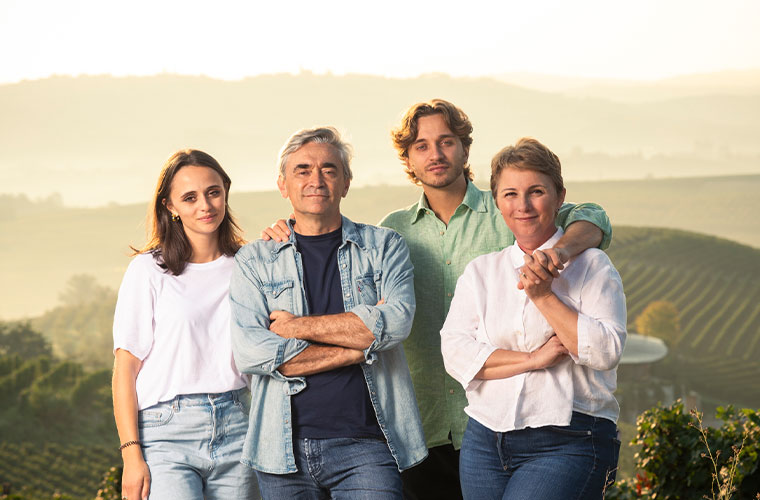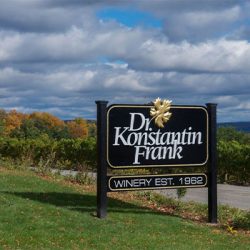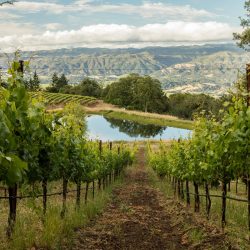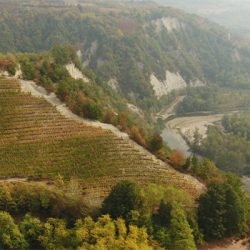

Luca and Elena Currado Vietti sold their family winery to American businessman Kyle Krause in 2016. Seven years later, they announced their departure from the winery in February 2023. Now, they are launching Cascina Penna-Currado, an artisanal estate based in Serralunga d’Alba. They will be joined in the business by their children, Giulia (22) and Michele (24).
Stephanie Johnson interviewed Elena Penna Currado by phone on March 16. Here is a transcript of that discussion, lightly edited for clarity.
Where will your new winery be based?
In a cascina [old farmhouse] we have been admiring for almost 30 years, and bought in 2018. It is one of the three oldest farmhouses in Barolo region, built in 1554. It was given to the church to make a hospital at one point, then became part of the Opera Pia association. The cascina is just 100 meters from the center of Serralunga, just on top of the Lazzarito MGA. We will preserve all the old aspects and have fixed what we needed to get started. We will be able to do everything there—destemming, vinification, aging and bottling (with our own bottling line). They have been making wine there since forever, so there was no better place to start our new project.
Where are your vineyards located? Do you own any plots in Lazzarito?
We don’t have any vineyards in Lazzarito, or in Serralunga. Our idea was to start from scratch, not to buy an existing winery. We knew exactly where we wanted to be. We have rented 13 hectares (32.1 acres) in Monforte d’Alba San Sebastiano that are just outside of the Barolo area. Until 1973 it was included in the Barolo region, but the consorzio needed surface area of Barolo to give to Cherasco [the smallest commune of the Barolo zone], so they asked the local Monforte farmers if they wanted to continue to make Barolo. At that time it was hard to grow nebbiolo there, because that part of Monforte faces the Alps; it was cooler, and nebbiolo struggled to ripen. And at that time, Barolo was not so famous as it is today. The Langhe in the ‘70s was much poorer and people needed to do what was economical for them. So they decided not to keep the Barolo [rights], and the consorzio gave those rights to Cherasco.
Luca and I have known this part of Monforte for 20 years. It is close to Ravera from Novello, which also struggled to ripen in those days, but today is one of the most incredible crus in the Barolo region. When we bought our Ravera vineyards in the 1980s it was a good cru, but now it is a grand cru. Our Monforte plots have the same exposure, and we know the quality of the vineyards and soils, and the nebbiolo grown there. The climate is incredible, because with global warming, that area receives the wind from the Alps and is having the best performance. From Monforte we will make a Langhe Nebbiolo, a Nebbiolo d’Alba (with longer aging than the Langhe Nebbiolo), and also dolcetto, and a very traditional barbera aged in large casks for one year. The Monforte [San Sebastiano] property is bigger than we need, so we make a selection [of grapes] and sell the rest.
Will you make any Barolo? And from which vineyards?
We will make three Barolos. The Barolo Classico will be a blend from top MGA sites. Verduno’s San Lorenzo gives freshness, spice and elegance. We also rented vineyards in Perno and San Giovanni [both in Monforte d’Alba], which will provide freshness and backbone. We will also have two single-cru Barolos. We are not announcing which ones yet, but I can tell you that they are among the five most important grand crus in the Barolo area.
What are your total vineyard holdings now?
We have long-term leases on about 20.5 hectares [50.6 acres] – 13 hectares [32 acres] in Monforte San Sebastiano, 5 [12.4 acres] in the Barolo area, and 2.5 [6.2 acres] near Tortona for Timorasso. We will make a Colli Tortonese DOC Derthona Timorasso, then will label it as Derthona DOCG as soon as the DOCG is approved.
When will your first wines be released?
The first vintage will be 2022 Dolcetto, Barbera and Langhe Nebbiolo from the Monforte property. We will release about 3,000 bottles of each wine in March or April of 2024. In September we will release a 2023 Timorasso, Dolcetto and Langhe Nebbiolo. The 2023 Barbera and Nebbiolo d’Alba will be released in 2024. The first Barolo Classico and single cru Barolos will be vintage 2023, releasing in 2027.
How much wine do you plan to produce?
Our idea is to be a medium-size artisanal winery and produce 70,000 to 75,000 bottles a year for all wines, which allows us to control everything. We want to be on top of everything in the vineyard and the cellar and be present for all aspects of production. For me and Luca, the last years have been really intense for travel and other things. What we want now is really to go back to our origins, to working in the vineyards and the cellar full time. When I met Luca, that was the production his family was doing. Now we want something that can we can manage by ourselves. We will have the kids helping, and a few others helping, but we want to be on top of everything and follow everything. We feel very lucky to have the possibility to restart, and as with any new project it will evolve, but this is the start. Giulia and Michele said they would be on board for this. [At Vietti] they always helped us during harvest, in the vineyards, with tastings. Giulia spent some time in Sancerre at Vacheron and worked at a wine shop in San Francisco. She is still working on her studies, but Michele will be done with his in May. He will go and work somewhere else first to get some experience before coming back to the family business. We think this is correct to work outside of the family winery to bring back some experience and ideas.
is the Italian wine editor at Wine & Spirits magazine.
This is a W&S web exclusive. Get access to all of our feature stories by signing up today.




















